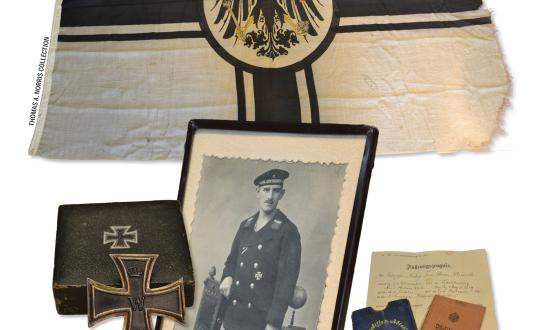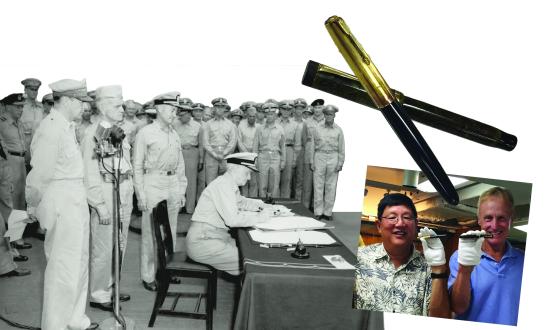If you’re a naval-oriented collector, perhaps you own a battleship model, be it a plastic Revell or a handcrafted beauty worth hundreds of dollars. Perhaps you own a whole shelf of them, for that matter, and more power to you. But no matter how avid you are, you cannot own an actual battleship (unless you also own deep slip space and a bottomless well of maintenance-and-upkeep financing). And while it’s not feasible to possess such a gargantuan artifact, you can possess a fragment of her—and with it, a fragment of her history.
This block of wood—approximately 2 inches long by 1.5 inches wide and 7/8 of an inch deep—is just such a piece of the past: a remnant of the original deck of the storied battleship USS Oregon (BB-3). The block currently is in the collection of historian and 2019 Naval History Author of the Year Barrett Tillman. He hails from a long line of Oregonians, and the relic belonged to his late mother. She “had the block in her bric-a-brac for as long as I can remember,” he says, and he believes it may have come into her possession during the time she worked at an Oregon shipyard in World War II.
The Oregon’s mast and bow still stand at Tom McCall Waterfront Park in Portland, Oregon; her wheel remains preserved at the Oregon Historical Society; her smokestacks are in storage. But the rest of the warship has long since gone to the scrapyard of history—except for parts, such as this block, stripped and preserved as mementoes. To hold such an item in one’s hand is to connect to another world, the world of 1896, and the commissioning of the ship soon to be known as “the Bulldog of the Navy.” The Oregon was the third and final vessel of the pre-dreadnought Indiana class. As the Spanish-American War heated up in 1898, Battleship No. 3’s expeditious voyage from the Pacific to the Atlantic became the stuff of naval legend. (See “The Race of the USS Oregon,” June, pp. 42–47.)
After sundry reserve placements and reactivations, the Oregon was decommissioned for good in 1919 and became a beloved presence as a museum ship on the Portland waterfront. In 1942, the Navy opted to scrap her for materials; the process began Stateside (thus paving the way for such salvaged mementoes as this one) then was put on hold, and what remained of her was towed to Guam for ammunition storage. The complete scrapping of her finally occurred in the 1950s.
Those posterity-minded souls who had the vision to save some portions from a warship on death row did those of us who followed a favor. With this humble chunk of wood, a great sea-behemoth of old in some part still exists, not just in memory, but tangibly. It’s a type of collectible understandably popular; you can buy a piece of original decking at floating museums such as the battleships Missouri (BB-63) and Iowa (BB-61). But for a ship like the Oregon, a vessel no longer with us, that which remains is all the more to be treasured.
—Eric Mills






